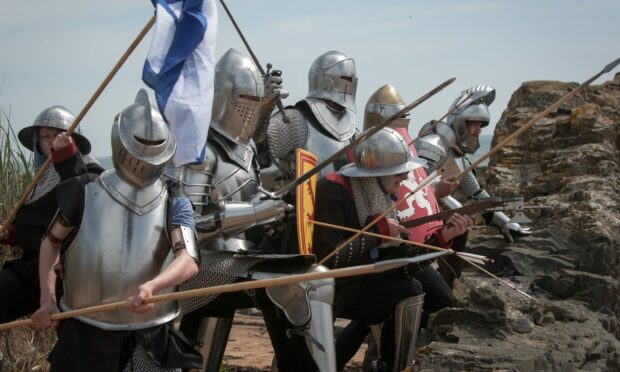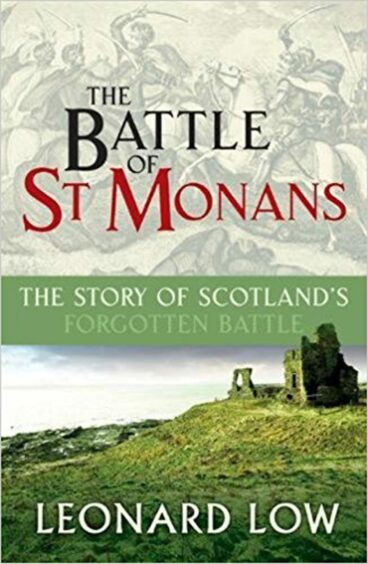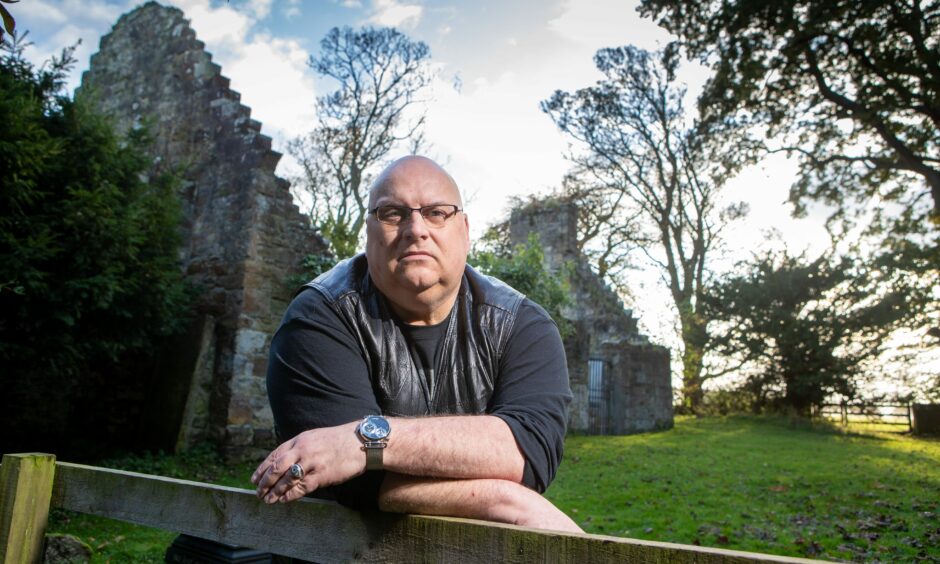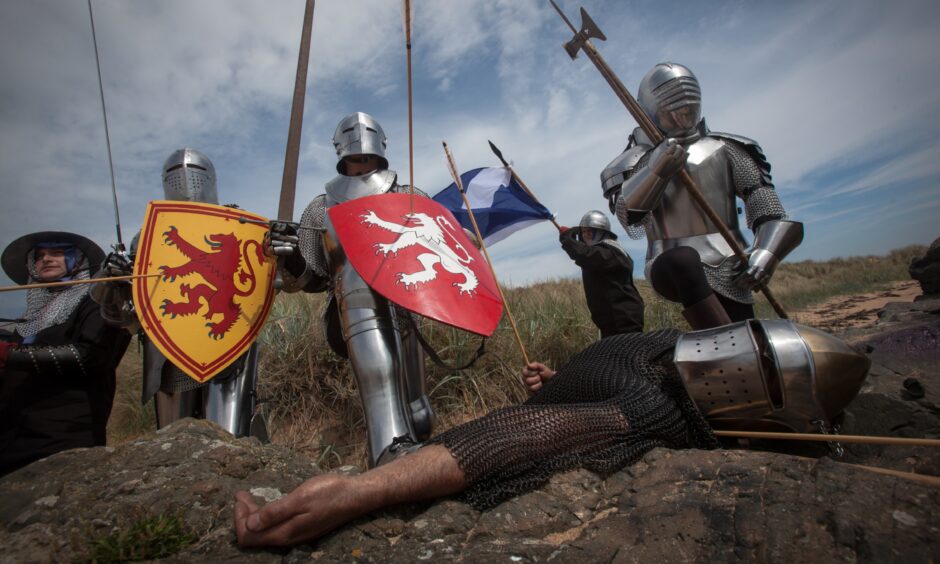A ‘forgotten’ East Neuk of Fife battle, which saw the Scots inflict a crushing defeat on the English leaving 900 dead, has been awarded official battlefield status thanks to the work of a local author.
The Battle of St Monans, which took place in 1548, has been recognised by Scottish history archivists Canmore after information gathered by Largo-based Lenny Low was presented to them.
After eight months of investigation into Lenny’s work, the author said they now recognise his 2017 book The Battle of St Monans as the authorised source of the information.
Why was the battle ‘forgotten’?
Lenny explained that until recently, the Battle of St Monans didn’t exist in the military records of Scottish history.
However, research for his book revealed that around 900 died on the coastal plain between St Monans and Elie and that the combatants were the High Admiral of England and James Stewart (Mary Queen of Scots’ half-brother).
Making it his goal to unearth why the battle had been ‘lost’ to history, he discovered through the work of a Mary Queen of Scots author writing in the 1700s that great tracts of files were missing for the years 1548, 1550 and 1551.
In 1650, Oliver Cromwell transported all the Scottish records to the safekeeping of the Tower of London where they remained for 10 years until he was replaced by King Charles II.
The records were returned to Scottish shores, but disaster struck when a ship sank near Newcastle, taking 85 barrels of records.
It took the records of 1548, 1550 and 1551 with them and among the losses were details of the Battle of St Monans.
Researching what happened
Lenny told The Courier: “From scant information found over ancient 16th and 17th century diaries and vellum writings, 18th century English based writers and from the people who witnessed the battle, as well as French, English and Scottish 16th century sources, I managed to construct that a battle involving heavy characters in British history – James Stewart, Mary Queen of Scots’ half-brother and Lord Clinton the Admiral of England, was indeed fought on the beaches of St Monans on June 19, 1548.
“The reports state between 1200 and 5000 English soldiers landed at St Monans from their camp at Musselburgh where the previous year the Battle of Pinkie Cleugh was fought and lost by the Scots.
“Sir John Wemyss on request of the Dowager Queen – Mary Queen of Scots’ mother – was asked to “defend Fife from the English invaders”.
“This he did forming a hard hitting mobile force with the loyal castle owners of the Woods of Largo, the Lindseys, Sandiland of St Monans and the prior of St Andrews being 17 year-old James Stewart bringing a small army with him.”
Defence of the Fife coast
Lenny told now stacks of wood formed piles around the coast from the heights of Largo Law to Elie and around the East Neuk fishing villages.
At the first sign of enemy movements, these fires would be lit as warnings to which direction they were coming.
At the time, the English were pursuing their brutal Rough Wooing campaign against Scotland, partly to break the alliance with France but also in an attempt to force the marriage of Mary Queen of Scots and Henry VIII’s son, Edward.
The enemy landed at St Monans. But the Scots had arrived before hand and dug a deep trench along the skyline from the sea.
The trench filled with combustible items was set on fire to cause a great screen hiding the Scots numbers.
“The English formed and advanced using their heavily armoured men in the van,” said Lenny.
“The smoke hid a wall of small canons. When close enough they fired into the English, splitting them into confusion as the Scots left through the smoke to attack.
“In several reports 600 to 900 were dead on the beach with one English ship sunk and hundreds of prisoners taken.
“After the disgrace of the battle of Pinkie the Scots had appeared again still in arms and the first of many victories over the old enemy till they left our land.
“I wrote to Canmore to establish why the battle was not on our battle credits in history.
“They were bemused to the actual battle as no metal detecting finds had been had.
“With the evidence I gave them from my sources, they have accepted the battle into Scots history – and my book The Battle of St Monans is now the official source.”














Conversation